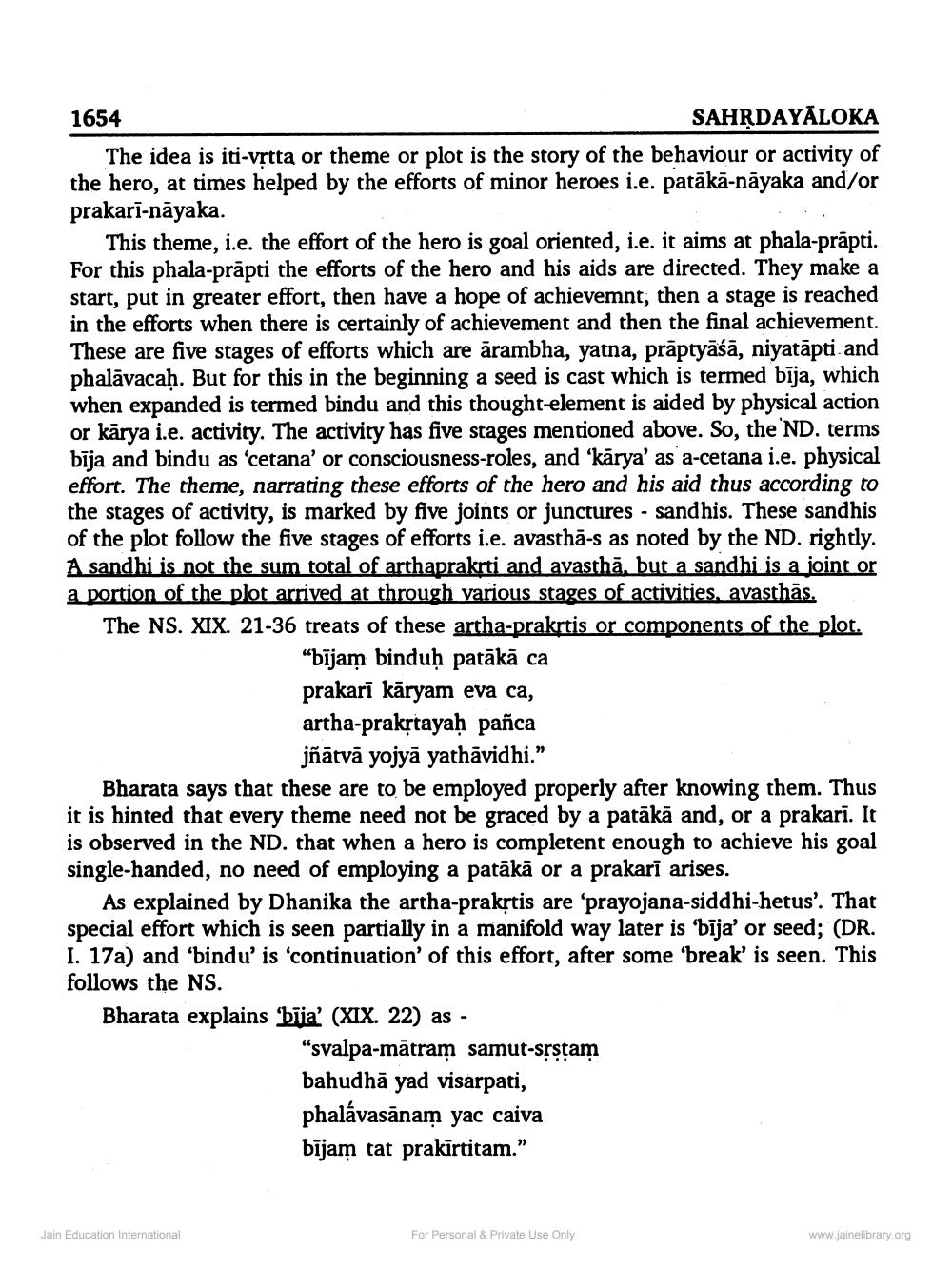________________
1654
SAHRDAYALOKA The idea is iti-vrtta or theme or plot is the story of the behaviour or activity of the hero, at times helped by the efforts of minor heroes i.e. parākā-nāyaka and/or prakarī-nāyaka.
This theme, i.e. the effort of the hero is goal oriented, i.e. it aims at phala-prāpti. For this phala-prāpti the efforts of the hero and his aids are directed. They make a start, put in greater effort, then have a hope of achievemnt, then a stage is reached in the efforts when there is certainly of achievement and then the final achievement. These are five stages of efforts which are arambha, yatna, prāptyāśā, niyatāpti and phalāvacah. But for this in the beginning a seed is cast which is termed bija, which when expanded is termed bindu and this thought-element is aided by physical action or kārya i.e. activity. The activity has five stages mentioned above. So, the 'ND. terms bīja and bindu as 'cetana' or consciousness-roles, and 'karya' as a-cetana i.e. physical effort. The theme, narrating these efforts of the hero and his aid thus according to the stages of activity, is marked by five joints or junctures - sandhis. These sandhis
the plot follow the five stages of efforts i.e. avasthā-s as noted by the ND. rightly A sandhi is not the sum total of arthaprakrti and avasthā, but a sandhi is a joint or a portion of the plot arrived at through various stages of activities, avasthās. The NS. XIX. 21-36 treats of these artha-prakstis or components of the plot.
"bijam binduh patākā ca prakarī kāryam eva ca, artha-prakrtayaḥ pañca
jñātrvā yojyā yathāvidhi.” Bharata says that these are to be employed properly after knowing them. Thus it is hinted that every theme need not be graced by a patākā and, or a prakari. It is observed in the ND. that when a hero is completent enough to achieve his goal single-handed, no need of employing a patākā or a prakarī arises.
As explained by Dhanika the artha-prakstis are 'prayojana-siddhi-hetus'. That special effort which is seen partially in a manifold way later is 'bīja' or seed; (DR. I. 17a) and 'bindu' is 'continuation of this effort, after some 'break' is seen. This follows the NS. Bharata explains 'bija' (XIX. 22) as -
"svalpa-mātram samut-srstam bahudhā yad visarpati, phalávasānam yac caiva bijam tat prakīrtitam."
Jain Education International
For Personal & Private Use Only
www.jainelibrary.org




